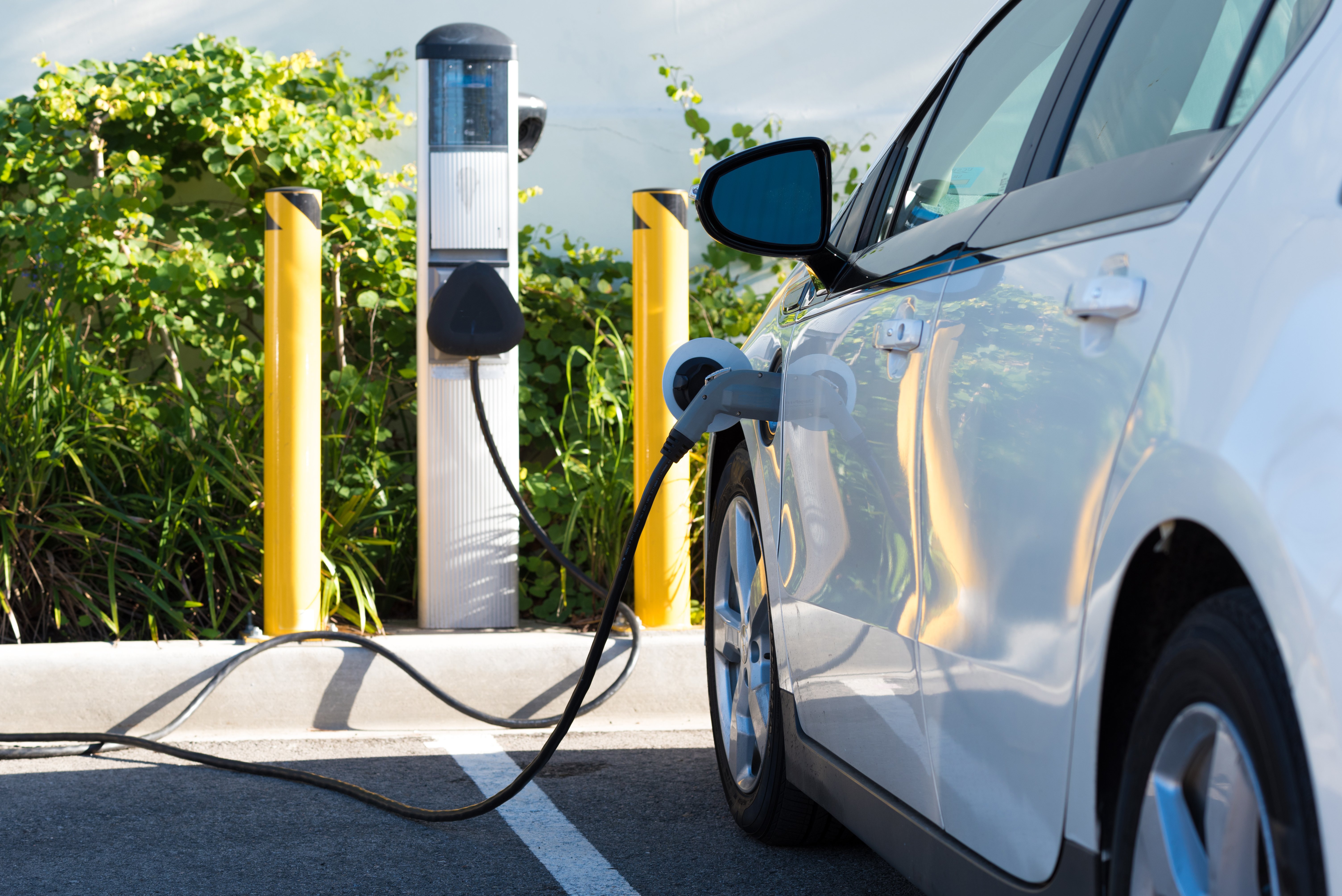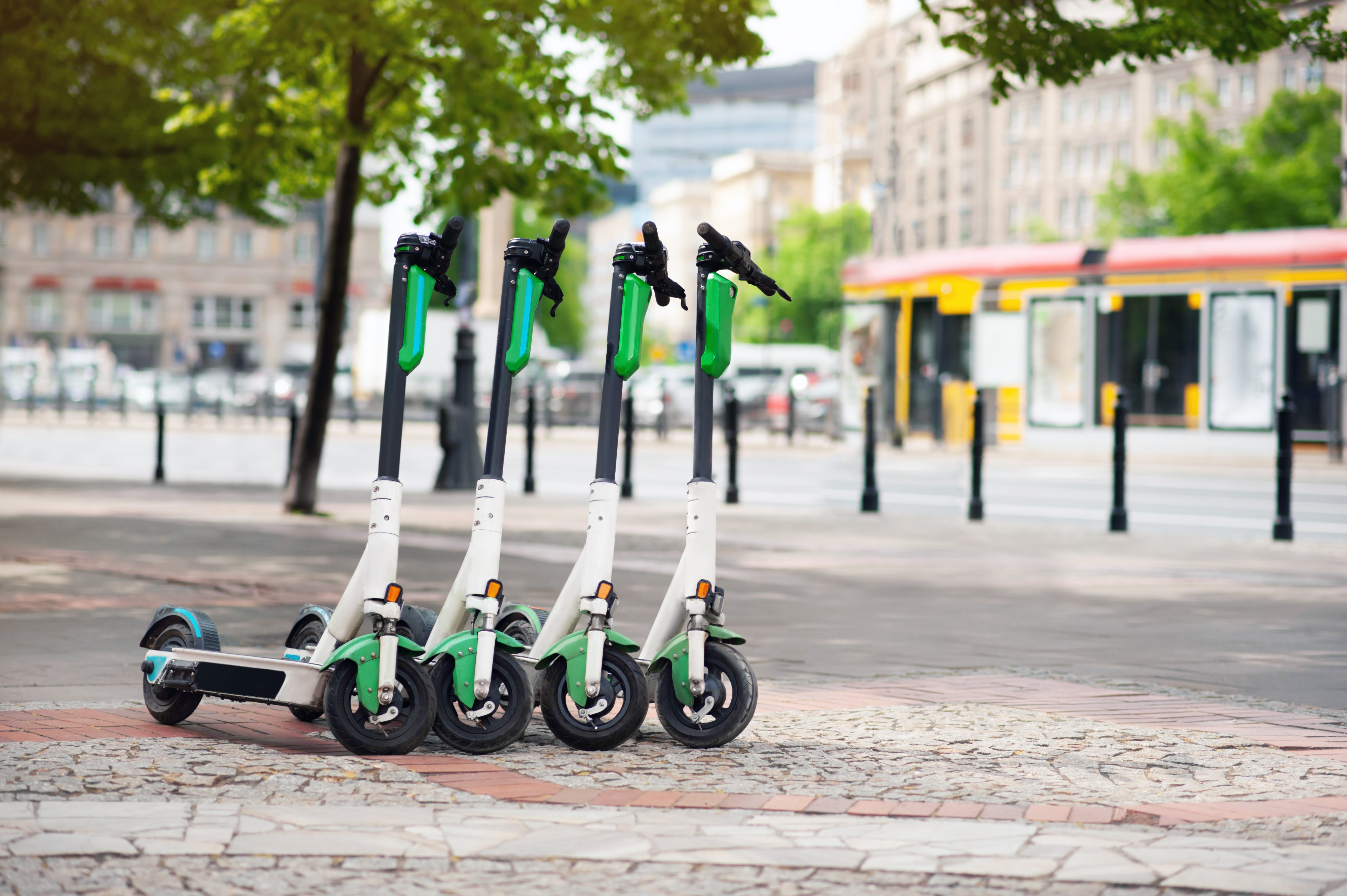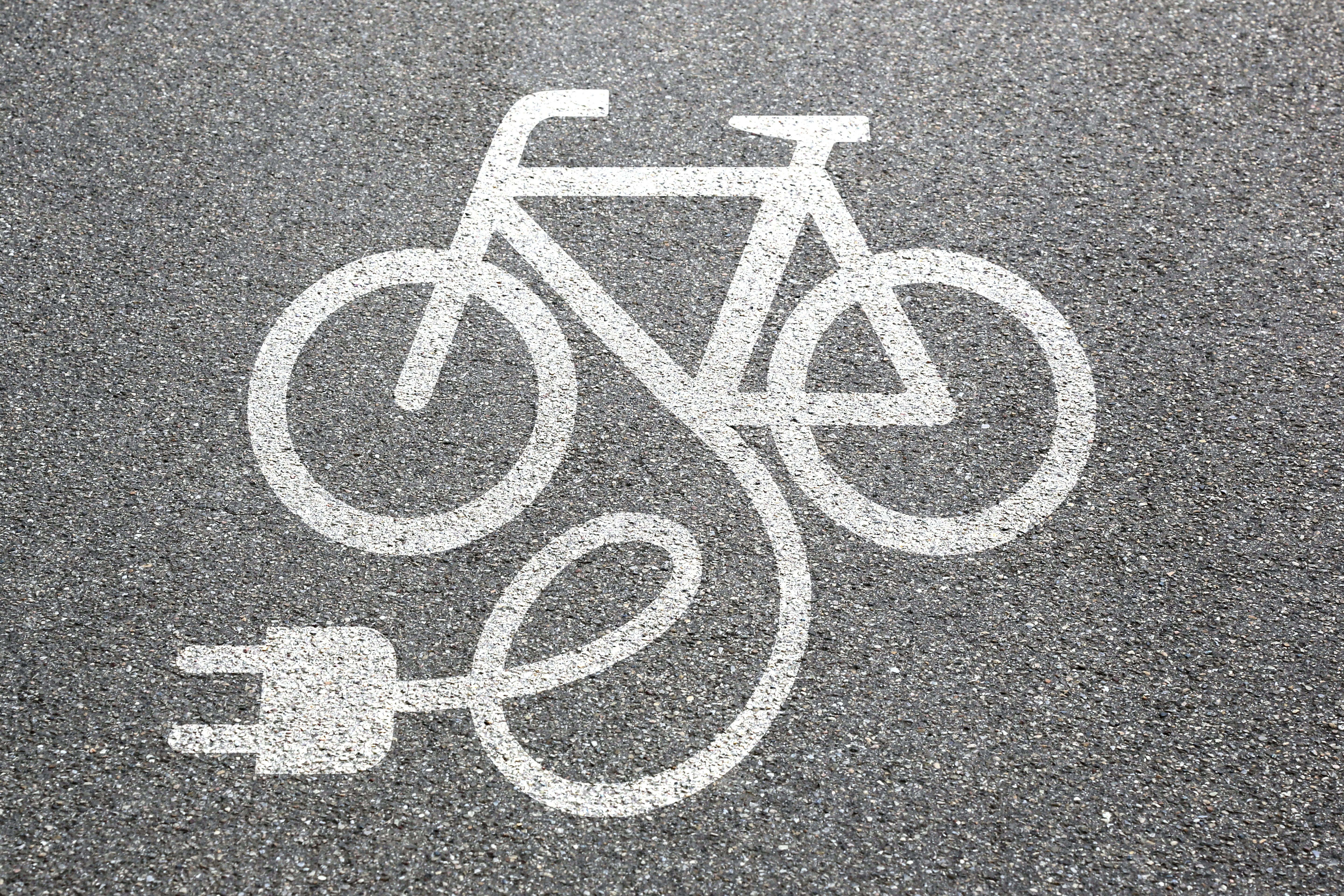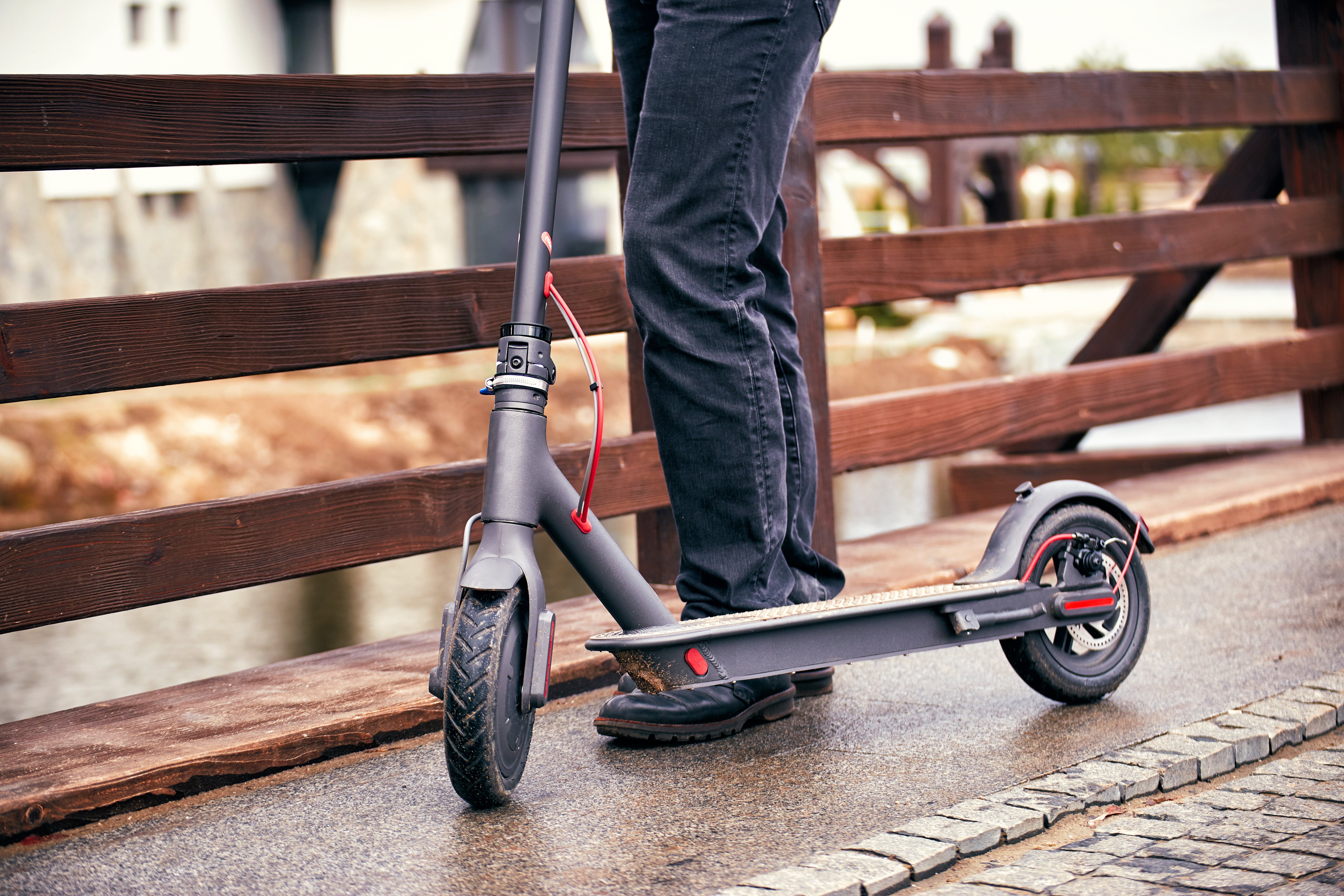Micromobility is here to stay, and it’s changing how we experience urban life for the better. With Unagi’s membership program, you can enjoy all the benefits of a top-tier electric scooter without the sky-high price of ownership or the inconvenience of ride-sharing.
The electric scooter market has seen massive growth over the past ten years, and it's not just in the United States that has seen huge rises in e scooter adoption.
All over the world governments and communities have been adapting to the increased demand for electric scooters, whether that's in the form of shared e scooter initiatives or personal ownership.
We'll take a look at what's driving the uptick in e scooters, and what the future has in store for the sector.
Electric Scooters and Green Energy
With ever-increasing heatwaves, forest fires, and flooding impacting countries globally, greener mobility options have become more and more popular as consumers try to reduce their carbon emissions.
Worldwide, governments have offered both incentives for adopting transport options with less greenhouse gas emissions and introduced initiatives like low emission zones and free vehicle charging infrastructure in larger cities.

The automotive industry has shifted massively to accommodate electric vehicles, with hybrid vehicles on the rise and massive market growth in electric car firms like Tesla, which has seen market cap growth of around $692 billion in the past twelve years.
Global market uptake of electric scooters
It's not just the four-wheeled car industry that has gone stratospheric. Shared mobility options have hugely increased in popularity too.
Major cities worldwide such as Lisbon, San Francisco, Paris, and Singapore now have plenty of low-emission options to choose from to get you from A to B, from bike sharing to e scooters payable by the minute.
Electric scooters in these cities (to name a few) are visible all over, with a few key companies like Lime, Bolt, Wind, and Voi pouring dockless e scooters onto the streets.

Whilst this might seem like extra sets of wheels on the roads, they take the place of four-wheeled vehicles so in fact reduce traffic congestion.
Going green? Why e scooters?
The e scooter market isn't only confined to shared mobility options however, far from in fact.
Different modes of transport appeal to different demographics. It can be hard to say whether increases in e scooter use are more attributed to personal choice or to their wider availability.
It is likely a combination of the two.
Some people will naturally opt to avoid e bikes or manual bikes out of preference for the less physical approach to transport that e scooters provide.
Another benefit that scooters provide that other transportation modes do not is the ease with which they can be loaded and unloaded into the trunk of a car or on public transport.
This makes them a really useful tool and has no doubt contributed to their uptake in adoption in recent years, especially since the pandemic with the return to the office.
E-scooters are in fact counting for a greater portion of the wider micromobility landscape year on year.

Whilst e-bikes still make up for most of the market share here, electric scooters are increasing at a faster rate generally.
One thinktank investigating micromobility observed that the electric scooter market is set to increase at a compound annual growth rate (CAGR) of 10.3% between 2017 & 2028, meaning roughly a 10% increase year after year.
Their research report showed this is mainly due to the eco-friendly and affordable nature of e scooters, as well as the e scooter market still being in a transition stage of implementation.
Affordability of E Scooters
Green energy isn't only attractive from a socially conscious point-of-view, it also offers an attractive solution through its affordability.
With inflation and the cost of living rising globally, keeping costs down and reducing fossil fuel dependence are both growing concerns across the globe.
The many benefits of e scooters
Electric scooters by nature are not at the mercy of the global market outlook on oil, causing wildly fluctuating prices of diesel and petroleum.
People the world over are looking for not only eco-friendly, but low-cost alternatives to fossil fuels for their modes of transport.
E scooter companies have been investing heavily in researching and producing the most eco-friendly, renewable battery type which transcends the emission standards of the cities in which they are used.
Using an e scooter can bridge the gap between many people's houses and public transportation options or circumvent the need for those options entirely.
Both of these outcomes generally permit the user cheaper commuting options, saving them money on the commute.
Whilst initially costing the user a one-off investment, this is generally much lower than a car or other vehicle powered by combustible fuels.

On top of that, electric scooters are usually exempt from road and emission taxes and much cheaper to insure in comparison to their combustible transport competitors.
E scooter battery types
However, it isn't just the end-user of electric scooters who are benefitting from cost improvements. Another factor sure to be driving the growth of the e scooter market is the cost reductions and technological improvements for the suppliers.
Initially, many scooters operated with Sealed Lead Acid or Nickel Metal Hydride batteries, which are heavier and in the case of the former, very toxic for the environment.
However, the Lithium- Ion battery type is increasing in popularity due to its increased performance capability and eco-friendly benefits.
Li ion batteries are expected to exhibit growth in the region of 10% year on year, and this increase in demand should continue to lower the cost.
A recent research report figured that the price of Li ion batteries has reduced by up to 97% in the past three decades, owing to their increased popularity globally for a huge range of applications.

The adoption rate of this battery type will likely further increase the affordability of e scooters not only to the consumer but to the producer too.
Market Growth in Electric Scooters
It is impossible to look at the market growth of any sector in the past few years without taking into account the impact of the COVID-19 pandemic.
The COVID crisis triggered economic slowdown across the board from Boston to Beijing, and relatively nearly every sector was negatively impacted in some way.
Nonetheless, there are factors of attraction that have positively affected the e scooter market despite this setback, such as high mechanical efficacy, low noise levels, and relatively cheap maintenance costs.

In addition, consumers have an increased interest in social distancing (a drawback of public transportation), which has encouraged a surge in demand for e scooters around the world.
One market analysis report estimated the global electric scooter market at a whopping USD 20.78 billion in 2021, with the US market accounting for USD 1.4 billion of that, or just under 7%.
This figure takes into account both personally owned electric scooters as well as the ridesharing e scooter services, such as Lime and Bolt, which we are seeing more and more.
In fact, these sharing services have been rising in popularity massively since 2016, with more than 100 cities and university campuses using them around the world.
Breakdown of e scooter market
In terms of the different types of electric scooters available, the e scooter market can generally be split into three different categories or product types.
Firstly there are retro scooters, the ones which look like your typical Vespa-style scooter, taking up 51% of the market share in 2021.
Secondly there is the standing or self-balancing electric scooter, taking up less space than the retro option, but still requiring a space to stand when not being driven.
The final piece of the competitive landscape is the folding e scooter (the category which Unagi falls into), which is witnessing particular uptake in the United States.
The adoption of this type of electric scooter in the US is due specifically to the increased pressure on e scooter manufacturers to produce more mobile electric scooters.
On top of that, e scooter riders are pushing this rise in popularity as they are opting for the most lightweight and mobile option.
Many electric scooters in this self-standing category now offer swappable batteries, to even further increase the independence and mobility that the scooters offer.
Future Market Insights

Looking forward using e scooter statistics, future market insights suggest that the e scooter market will continue to grow exponentially in the coming years.
If the market overview of the past few years has shown the sectors resilience even to COVID-19, it’s expected that without similar hindrance it will grow at a quicker rate than it has since its inception less than a decade ago.
Key market trends
Looking at key market trends, research reports suggest that the size of the global electric scooters market will keep on growing.
This market was estimated to be worth USD 20.7 billion last year in 2021 and is expected to reach somewhere in the region of USD 22.3 billion by the end of this year.
Looking even further ahead, the market is expected to see a compound annual growth rate (CAGR) of 7.8% between now and 2030, where it is estimated it will be worth over USD 35 billion.
As for the folding variety of scooters specifically, related research reports suggest that this segment of the e scooter market will grow by 10.2% CAGR during the same forecast period.
This means it will exhibit faster growth than the various other segments as research and development initiatives point towards li ion technology becoming more popular across the global market.
Folding scooters (and to a lesser extent kickstand scooters) are riding a growing trend for their ability to cover short distances with particularly low maintenance, in comparison to the retro variety of scooters.
The rise and rise of e scooter adoption
E scooter adoption has consistently grown since they were properly introduced nearly a decade ago to the public, and there's no doubt that future market insights suggest that the e scooter market will continue to grow.

Whilst the key trends explored in this article have been focused more on the US market, the sector is growing globally. From the Asia Pacific region with the largest market share, to the region of Latin America, where the scooter is more recently being introduced.
From the savings on fuel and transport concessions from government agencies, to non-monetary incentives such as less greenhouse gas emissions and carbon footprints, there are plenty of factors fuelling the rise in e scooter adoption.
Green options are becoming more popular across the board, from ride hailing services to scooter and e bike sharing platforms, and it's likely to not stop with just micromobility either.
One research expert recently claimed that micromobility will be "just like phones ... we ended up doing much more with them than they could do when first introduced to the market."
What that means we will have to wait and see, but one thing's for sure, the e scooter market in your country is booming, so there's no better time than now to get involved.

Stay current with the latest U.S. electric scooter laws in our 2025 guide. Updated annually since our first comprehensive guide, ensuring you have the most recent state and city regulations to ride responsibly”

The Slack Core 920R is currently the fastest electric scooter in 2025 that you can purchase without the need for pre-order.

Our selection of the best electric scooters 2025 spans the fastest e-scooters to the most portable ones, the ones designed for city riding and off-road, the best scooters for rain, budget electric scooters for students, and more powerful ones for skilled riders.

The Unagi Voyager is the best lightweight electric scooter for adults and teenagers. It is the ultraportable sequel to its predecessor, the Unagi Model One Classic.

If you're wondering whether an electric scooter with a seat is right for you, this is a detailed article that would suit your need.

Understand which personal electric vehicle is best, the choice between an electric bike or electric scooter might already be made for you by some critical factors, including portability and storage capacity.

In the U.S., most states don't require a license. For those that do, they usually just ask for a regular driver's license or a learner's permit.

Yes, you can bring an electric scooter on a plane, but it needs to have a lithium battery smaller than 100 watt-hours, which most don't.

Manufacturers advise against riding electric scooters in the rain. The main reasons are: water can fry the electronics, make the ride dangerous, and void your warranty.

The basis and the premise of my work is that we either operate out of love or we operate out of fear...Time is currency. The coolest thing about the scooters is that it's really quick, and it goes uphill. From there, traveling more efficiently and having a good time doing it--I think that's the most important thing.

Cynthia Leu has a full plate. A tech worker by day, Cynthia spends her off time balancing the parallel lives of a powerlifter, entrepreneur, mental health advocate, and more. Riding Unagi helps this USMC veteran cut down on everyday…

https://www.youtube.com/watch?v=7m2hVBE62LY Rasheed Muhammad is sick of Los Angeles traffic. In order to preserve his sanity, Rasheed has traded his everyday driving habit for the portable and beautiful Unagi Model One. It’s an essential accessory for navigating LA streets -- and…

Rich Lee, Co-Founder of San Francisco’s SPRO Coffee Lab, wants to share his love for coffee with the world. He depends on riding Unagi to avoid the hassle of navigating the parking crunch in the booming Mission Bay neighborhood.…












